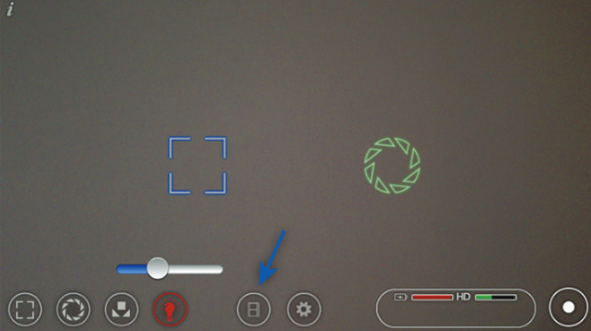How to use an iPhone to diagnose eye disease
September 26, 2013
[+]
Massachusetts Eye and Ear researchers have developed
a simple technique of fundus (retinal) photography in human and rabbit
eyes using a iPhone, an inexpensive app, and instruments that are
readily available in an ophthalmic practice, as described in the Journal of Ophthalmology (open access).
Large
choroidal nevus imaged in the emergency department setting (doctor is
holding an external lens in front of the iPhone) (credit: Luis J.
Haddock et al./Journal of Ophthalmology)
Commercial fundus cameras can cost tens to hundreds of thousands of dollars, making the technology out of reach for smaller ophthalmic practices and to physicians in third-world countries.
But previous techniques of fundus imaging were often difficult to repeat, partly because video capture using Apple’s built-in camera app in iPhones cannot independently control the focus and the exposure, which results in glare and poor image quality.
“Our technique provides a simpler and higher quality method to more consistently produce excellent images of a patient’s fundus,” said senior author Shizuo Mukai, M.D.,Mass. Eye and Ear retina specialist and Harvard Medical School associate professor of Ophthalmology.
“This technique has been extremely helpful for us in the emergency department setting, in-patient consultations, and during examinations under anesthesia as it provides a cheaper and portable option for high-quality fundus-image acquisition for documentation and consultation. The technique is well tolerated in awake patients most likely since the light intensity used is often well below that which is used in standard indirect ophthalmoscopy.”
[+]
Using the described technique of smartphone fundus photography with
the use of iPhone 4 or iPhone 5, the Filmic Pro app*, and a 20D lens
with or without a Koeppe lens, researchers were able to capture
excellent, high-quality fundus images in children under anesthesia and
in awake adults.
Filmic
Pro app allows independent control of light intensity (red light bulb),
exposure (green circle), and focus (blue square) while filming. Video
library access (blue arrow). (Credit: Luis J. Haddock et al./Journal of Ophthalmology)
The best results were achieved in the operating room when a Koeppe lens was used in addition to the 20D lens; however, excellent images were acquired with the 20D lens alone in the clinic and emergency room setting as well as in the operating room. Researchers report that even first-year ophthalmology residents were able to master this technique in a relatively short period.
“This technique is relatively inexpensive and simple to master, and takes advantage of the expanding mobile-telephone networks for telemedicine,” Dr. Mukai said. “We expect that the quality of the images achieved using this technique will continue to improve as higher-resolution cameras with larger sensors and better image stabilization is incorporated into newer smartphones.”
In addition to Dr. Mukai, authors of the paper are Luis J. Haddock and David Y. Kim. This study was funded in part by gifts to the Mukai Fund at the Massachusetts Eye and Ear Infirmary.
* I just tried Filmic Pro. Awesome. Now my favorite camera app. Here’s a review. — Editor
(¯`*• Global Source and/or more resources at http://goo.gl/zvSV7 │ www.Future-Observatory.blogspot.com and on LinkeIn Group's "Becoming Aware of the Futures" at http://goo.gl/8qKBbK │ @SciCzar │ Point of Contact: www.linkedin.com/in/AndresAgostini
 Washington
Washington